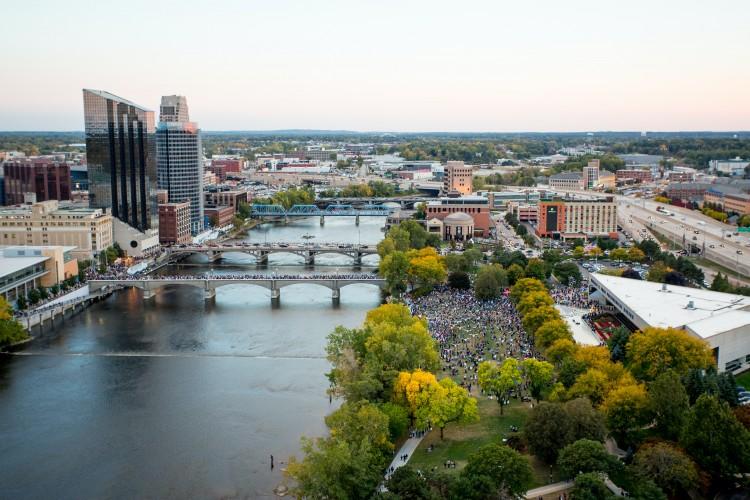
Short Summary
Grand Rapids, the second largest city in Michigan, is located along the Grand River east of Lake Michigan. As the economic and cultural hub of West Michigan, Grand Rapids is a fast growing city in the Midwest. It’s also a historic furniture manufacturing center, home to five major office furniture companies, and economically diverse from aviation to health care. In 2011, the city set a goal of 40% tree canopy cover. By filling available planting sites on city streets, canopy coverage has reached 34%. The city currently has approximately 62,000 street trees and 20,000 park trees, and is aiming to plant new trees on private property and in parks to reach 40% coverage. Due to its location east of Lake Michigan, Grand Rapids experiences some maritime effects. The city has relatively mild spring and autumn seasons, warm and humid summers, and cold and snowy winters in a humid continental climate. Understanding tree species vulnerability as well as key climate impacts is crucial to continue improving tree canopy cover and implementing adaptive management techniques.
Tree Species Vulnerability
Species distribution modeling suggests that the changing climate will shift suitable habitat and heat and hardiness zones for various tree species in the Grand Rapids region. In the tree species list identified for Grand Rapids, 21 species have a low adaptability score, 70 species have a medium adaptability score, and 45 species have a high adaptability score. Climate change vulnerability of urban trees, including adaptive capacity and zone suitability under low and high emissions scenarios, is outlined in the tree species handout below.


Climate Change Impacts
The Grand Rapids Climate Resiliency Report, published by the West Michigan Environmental Action Council in 2013, outlines key projected climate impacts in the city. The average temperature is projected to increase by nearly 2°F by 2022 and nearly 4°F by 2042, while the average precipitation is projected to increase by 2.6% by 2022 and 8.5% by 2042. The largest increases in temperature are expected during the winter, while the largest increases in precipitation are expected in winter and spring seasons. Summer is the only season projected to become drier, and also the season with the smallest temperature rise. The Great Lakes region is also expected to experience more variable and volatile weather from year to year as well as season to season, which could lead to more extreme weather events. Grand Rapids Climate Action (GRCA), established in 2019, aims to achieve the goal of passing a resolution through the Grand Rapids City Commission to declare a climate emergency and commit to achieving carbon neutrality for the city by 2030.
Work With Us
To learn more about this project, contact Leslie.
